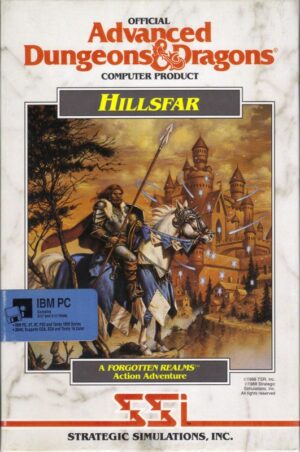Retro Replay Review
Gameplay
Bio-Senshi Dan: Increaser to no Tatakai places you in the boots of Dan, a young warrior thrust from a ravaged 2081 into the monster-plagued streets of 1999. The core loop blends action-platforming with Metroidvania-style exploration, rewarding players who patiently map each labyrinthine area. Doors often branch into secret alcoves or looping back to earlier zones, inviting repeated forays as new weapons and tools become available.
Combat leans more on stamina management than on instant deaths. Dan’s life bar depletes gradually with each hit, giving you a small window to counterattack or dodge. Defeated enemies drop energy points, which act as the game’s currency for upgrades—boosting health, attack power, or unlocking new abilities. This system encourages tactical retreats and strategic farming, ensuring that each skirmish remains tense but fair.
Platforming challenges are woven into the level designs rather than tacked on as standalone sections. You’ll need to time jumps across collapsing platforms, navigate spike traps, and activate switches to open locked paths. While some corridors demand nimble reflexes, the emphasis always drifts back to exploration: uncovering hidden shortcuts, rushing back to previously unreachable areas, and piecing together the sprawling map in a satisfying “aha” moment.
Boss encounters punctuate the adventure with dramatic flair. Each guardian of a labyrinth boss comes armed with distinctive attack patterns—some call for close-quarters sword slashes, others for ranged magic or hit-and-run tactics. Beating them not only advances the narrative but also grants major upgrades that unlock fresh routes, ensuring that exploration and combat remain tightly interwoven throughout the journey.
Graphics
Visually, Bio-Senshi Dan channels classic 16-bit charm with finely detailed pixel art. Character sprites boast fluid animations, from Dan’s sword swings to the grotesque lurches of mutated monsters. Subtle shading and parallax scrolling add depth to foreboding corridors, making the world feel lived-in despite its ruined, post-apocalyptic setting.
Environmental variety keeps each region distinct. Neon-lit factories give way to overgrown urban ruins, while flooded subway tunnels ooze with bio-luminescent hazards. Color palettes shift accordingly—cool blues and greens during underground segments, warm oranges and reds in lava-filled chambers—highlighting danger zones and guiding your eye toward interactive elements.
User interface elements, such as the life bar, energy meter, and upgrade menus, maintain a retro-inspired aesthetic without sacrificing clarity. Animated icons flash when you collect energy points, and simple yet effective visual cues—like screen shakes on heavy hits—enhance combat feedback. The result is a game that feels both nostalgic and polished.
Story
The narrative premise sets high stakes from the outset: Earth in 2081 is a decimated wasteland under the tyrannical reign of the enigmatic Increaser. Dan’s time jump to 1999 is portrayed through a brief but impactful intro sequence, laying out the tragic fate awaiting humanity and the urgent need to alter history’s course.
Story beats unfold through in-game text dialogues, environmental clues, and occasional cutscenes. As you delve deeper into monster-infested corridors, you’ll discover data logs and holographic recordings revealing the origins of the Increaser and the catastrophic experiment that unleashed the invasion. These snippets enrich the setting, transforming labyrinth exploration into a forensic investigation of Earth’s downfall.
While Dan himself remains something of a stoic archetype, supporting characters peppered throughout—an eccentric scientist here, a survivor hiding in the sewers there—add emotional weight. Their brief interactions may grant side missions or unlock secret upgrades, reinforcing the sense that your actions can rally survivors and rewrite the planet’s fate.
The tension ramps up as you close in on the Increaser’s lair. Plot twists regarding the entity’s true nature underscore themes of power, hubris, and redemption without drowning the player in exposition. By the final confrontation, you understand both Dan’s personal stake and the broader implications of victory or defeat, lending genuine drama to your climactic duel.
Overall Experience
Bio-Senshi Dan: Increaser to no Tatakai delivers a satisfying blend of exploration, combat, and narrative intrigue. Its non-linear structure invites methodical map completion, while the upgrade system ensures that every victory feels meaningful. Fans of classic action-platformers will appreciate the deliberate pacing, where discovery is as rewarding as defeating a challenging boss.
Controls are responsive and intuitive, with a concise button layout that keeps focus on movement and combat. Sound design complements the visuals: a moody synth soundtrack underscores the desolate atmosphere, and impact sounds punctuate each sword clash or monster roar, heightening immersion.
Replay value stems from multiple upgrade paths and hidden areas that remain inaccessible on a first run. Players can choose to specialize in brute strength upgrades or invest heavily in magic and ranged weaponry, altering playstyles dramatically. Even after the credits roll, returning for a thorough 100% completion run feels enticing.
Overall, Bio-Senshi Dan offers a compelling time-traveling adventure, balancing retro sensibilities with modern design touches. Its rich atmosphere, varied level design, and engaging progression systems make it a must-play for anyone seeking a challenging, exploration-driven action-platformer that respects its roots while forging its own identity.
 Retro Replay Retro Replay gaming reviews, news, emulation, geek stuff and more!
Retro Replay Retro Replay gaming reviews, news, emulation, geek stuff and more!









Reviews
There are no reviews yet.